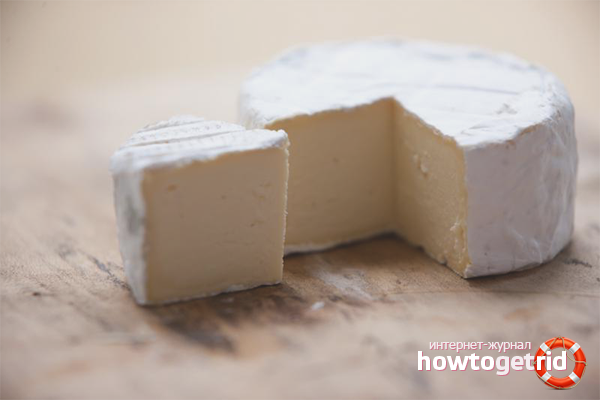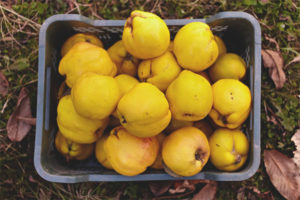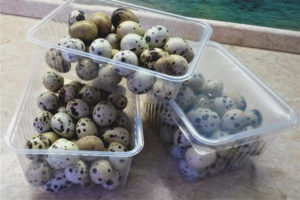The content of the article
Due to improper storage, cheeses begin to deteriorate rapidly, they show a characteristic light patina, the product crumbles and, of course, loses its taste. For the production of high-quality cheese is used not only cow's milk, but also goat, sheep. Hence the variety of tastes and structure, the product is hard, soft, brine, melted and with mold. Consider storage options for each species.
Hard cheese
This kind of product is characterized by density and the absence of holes. As a rule, hard cheese is in a compressed state for a period of six months and more, due to which it receives a similar consistency. The most common cheeses are "Parmesan" and "Edam".
- With proper storage, hard cheeses retain their taste and appearance longer than others. However, if the refrigerator is old, you should not stock up on the product for a long period.To lay the cheese 7-10 days (the maximum period of storage in the refrigerator) you need to constantly check it for the presence of tumors.
- To avoid mold on a crust of cheese, put a few cubes of cane sugar in its packaging. In cases where you prefer to put the dairy product in a different package, give preference to parchment paper.
- The optimum temperature for storing hard cheeses is considered to be a figure of 4-11 degrees, while the humidity should be at least 85%. You should not shift the cheese from one compartment of the refrigerator to another, because due to sudden changes the product will start to deteriorate 1.5 times faster.
- Before you start a meal, remove the cheese from the refrigerator, unpack and leave for 1 hour to erase all odors. If you have not eaten all the cheese after cutting, wrap it with polyethylene, make a few holes and put it in the fridge. In this form, the product will not wither in the next 6-8 hours.
Soft cheese
In the manufacture of such cheeses are not carried out thorough processing, as a result, on the shelves you can find products without a shell. Tofu, Philadelphia, Mascapone, Mozzarella are considered to be bright representatives of soft cheeses.The taste of food is very different, they are creamy, mushroom, with the addition of bacon.
- An important feature of the storage of soft cheeses is considered to be low temperature. The product can lie in the refrigerator at low temperatures for about 3 days.
- Like other types, this kind of cheese must be carefully packed before being sent to the fridge. An excellent option would be a plastic hermetic container or an enameled container, tightly closed with a lid.
- You can not store soft cheese with dairy products of another type, otherwise it will absorb the smell and start to deteriorate at an incredible speed.
Pickled cheese
The entire process of producing such cheeses involves the use of table salt. The product has a pronounced salty taste, slightly crumbly texture and a layered texture. The most common brine cheeses: Brynza, Adygei, Suluguni, Feta.
- For the proper storage of brine cheeses, it is necessary to use a solution of low concentration table salt. Put the cheese in a glass or enamelled container, pour the product with brine, cover and refrigerate.
- Before serving brine cheese to the table, try it: if the product is salty, soak in boiled cool water or milk. Most people pour cheese with hot water, as a result of which it becomes viscous, and also loses its beneficial elements and vitamins.
- Another option for storage of pickled cheeses is considered to be freezing. Oddly enough, but the product retains its useful qualities, if you do not keep it in the freezer for more than 2 days. Before use, you only need to pull out the cheese and let it "thaw" at room temperature.
Blue cheese
Dairy product of this kind is not subjected to heat treatment, cheese makers make sure that the mold was formed in a natural way and was useful for human consumption. Neoplasms can be various shades: from blue to red.
- Cheese with mold should be stored only in hermetic original packaging, which should fit tightly to the product.
- Do not put the cheese in an open container, food mold can "crawl" to other food in the refrigerator, due to which the latter will be spoiled.In addition, in open containers the product emits an unpleasant odor.
- Do not store blue cheese for more than 5 days. For the safety of the product throughout the period, you can shift it into a sealed plastic container, then wrap it with film (if the original packaging is not suitable for use).
Cream Cheese
The product includes butter, cottage cheese, heavy cream, milk. At the end of the treatment, so-called melters are added to the ingredients - salts that give the cheese a consistency.
- Straight cheese is stored in a closed plastic or glass container. If possible, it should be placed in a refrigerator drawer for eggs or vegetables / fruits. To avoid damage, do not place the product close to the walls.
- You can not store the cheese in a transparent plastic packaging, choose dark bags if desired. This method is rarely used, but it is not classified as prohibited.
- If melted cheese is cooked at home, it must be consumed in the first two days. In cases with a store product, the shelf life is 6-8 days.
- If possible, keep the processed cheese in large portions in vacuum packaging, such a move will allow the product to lie in the initial state for more than 3 weeks.
As a rule, cheeses become useless due to incorrectly set temperature conditions or sharp jumps, as well as violation of the humidity level. Proceed from the type of cheese, select the optimal conditions, do not tighten with the use.
Video: how to store cheese so that it does not dry out













To send